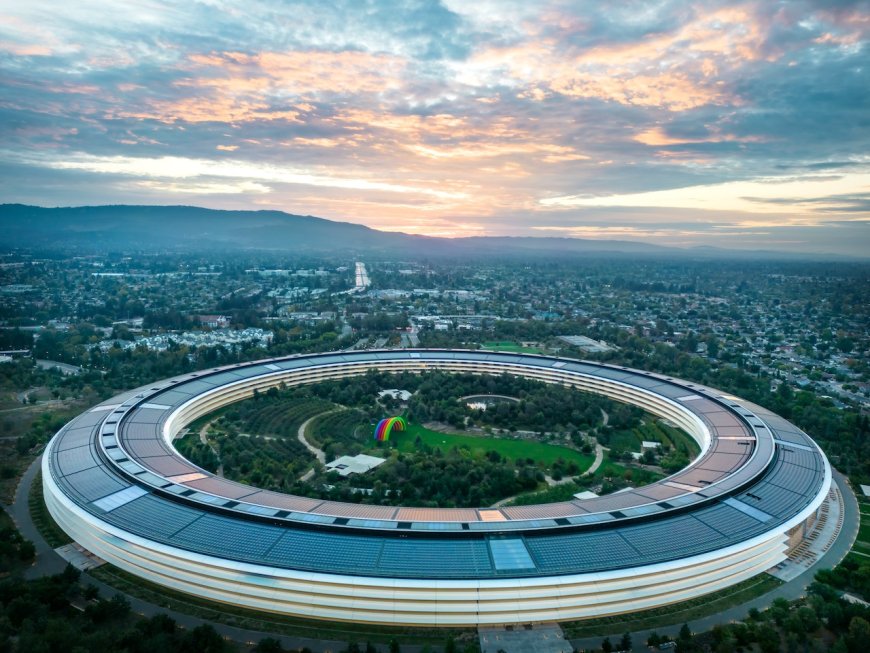Apple's Green Revolution: How Sustainable Tech Is Shaping the Post-Pandemic Era
Apple’s push for sustainable technology in the post-pandemic era is reshaping consumer electronics. From supply chain audits to carbon footprint cuts, here’s how eco-friendly innovation is changing U.S. tech trends.

In the wake of the pandemic, global consumer habits shifted dramatically. Remote work, online education, and digital-first lifestyles surged, leading to higher demand for devices. Apple, long at the forefront of consumer technology, has now placed sustainability at the core of its strategy. But this isn’t just a branding exercise — it reflects a broader supply chain transformation, one that ties environmental responsibility directly to consumer trust and future innovation.
This article takes a close look at Apple’s eco-friendly initiatives, the numbers behind its supply chain audits, and what these changes mean for everyday users.
Apple’s Push Toward Sustainability
Apple’s strategy hinges on its bold pledge: achieving carbon neutrality across its entire supply chain by 2030. This promise extends beyond its own operations and applies to suppliers, product manufacturing, packaging, and shipping.
Key moves already implemented include:
-
Recycled Materials: Apple reports that nearly 20% of materials used in its products in 2024 came from recycled or renewable sources.
-
Energy-Efficient Manufacturing: Over 250 suppliers have committed to running their operations on 100% renewable energy.
-
Smaller Carbon Footprint Devices: The iPhone 15, for example, boasts reduced carbon emissions per unit thanks to aluminum sourcing from low-carbon smelters.
According to Apple’s Environmental Progress Report, these initiatives reduced its operational carbon footprint by more than 45% compared to 2015 levels.
The Post-Pandemic Tech Consumer
The pandemic fundamentally altered consumer priorities. Surveys show U.S. consumers now weigh sustainability almost as heavily as price when choosing electronics. A recent Deloitte study found that 1 in 3 American tech buyers actively seek eco-friendly options, a trend Apple has capitalized on.
This is evident in features like:
-
Eco-Packaging: Minimal plastic use, replaced with recyclable paper-based materials.
-
Device Longevity: iOS updates continue to support older iPhones, reducing e-waste.
-
Repairability Enhancements: The company’s “Self Service Repair” program, while limited, reflects growing pressure to support circular device lifecycles.
For consumers, this translates into longer-lasting devices and a stronger resale market — making sustainability not just ethical, but economical.
Supply Chain Audits: A Hard Look at the Numbers
Apple’s sustainability claims are backed by rigorous supply chain audits, conducted across thousands of supplier facilities worldwide.
Recent data highlights:
-
95% supplier compliance with Apple’s code of conduct on emissions and waste.
-
15 million metric tons of avoided carbon emissions through renewable energy adoption by suppliers.
-
40% increase in recovered rare earth elements through device recycling programs like “Daisy,” Apple’s disassembly robot.
Environmental experts note that while Apple’s numbers are impressive, the company faces ongoing scrutiny regarding transparency. The reliance on overseas mining for cobalt and lithium — essential for batteries — raises ethical concerns that Apple continues to address through traceability programs and supplier diversification.
Carbon Footprint Calculations
One of the more innovative aspects of Apple’s sustainability approach is the integration of life-cycle carbon footprint calculations into product design.
For example:
-
iPhone 15 Pro: Estimated lifecycle emissions = 61 kg CO₂e, down from 70 kg for the iPhone 13 Pro.
-
MacBook Air (M2): Estimated lifecycle emissions = 126 kg CO₂e, a reduction of nearly 20% compared to earlier models.
These calculations aren’t mere numbers for reports — they shape engineering decisions, from sourcing materials to packaging logistics. Apple’s use of AI in optimizing shipping routes has also cut significant emissions, particularly in trans-Pacific freight.
The Competitive Ripple Effect
Apple’s green initiatives are influencing competitors across the industry. Companies like Samsung and Microsoft have ramped up their own sustainability pledges, driven partly by Apple’s ability to set consumer expectations.
Policy experts believe that Apple’s progress strengthens arguments for stricter federal environmental reporting requirements in the U.S. tech industry. The company’s willingness to disclose detailed supply chain emissions data stands in contrast to peers that remain vague.
What This Means for Everyday Consumers
For U.S. users, Apple’s sustainability drive has tangible effects:
-
More durable devices: Products are designed to last longer, reducing replacement frequency.
-
Stronger resale markets: Eco-focused design improves trade-in values.
-
Peace of mind: Buying Apple means supporting supply chains increasingly tied to renewable energy.
However, there are trade-offs. Some critics argue that thinner designs and tighter integrations still make Apple products harder to repair compared to competitors. Others worry that “green branding” can sometimes overshadow the practical limits of sustainability in mass electronics.
Expert Voices: A Fusion of Tech and Environment
Dr. Michelle Park, an environmental economist at UCLA, puts it this way:
“Apple is proving that climate-conscious innovation doesn’t have to mean slower growth. In fact, it’s creating a consumer loyalty ecosystem where sustainability and profitability go hand in hand.”
Industry insiders predict that Apple’s eventual move toward fully recyclable devices — possibly within the next decade — could mark the single biggest breakthrough in consumer tech sustainability.
The Road Ahead
The post-pandemic era demands more than just innovation; it demands responsibility. Apple’s fusion of cutting-edge technology with climate-conscious policies offers a blueprint for the future of the consumer electronics industry.
The question now is whether other major players will rise to the challenge — and whether consumers will continue to hold corporations accountable for the true cost of the devices in their pockets.











